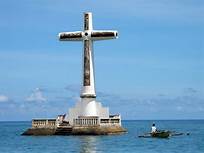Some folks want to experience something unexpected. Some look for breath-taking scenery, some yearn for an idea of history, even though some need to find out more about the supernatural. Very few places on the planet have these three, and that place is called Camiguin.
The Camiguin Island is located in the center in the Philippine Archipelago. For centuries, the same as the rest with the country, it absolutely was a former possession of Spain, the United States, and Japan. This fact has allowed Camiguin to achieve and develop several features that separate it in the rest, by leaps and bounds. Here we go.
Camiguin’s natural hot springs, cold springs, and water falls are well-known throughout Asia along with the rest with the world for pristine waters and unspoiled state. Ardent hot springs, warmed through the active volcano Mt. Hibok-hibok, is rumored to get great healing powers, and it is visited often by those who look for other alternatives methods to maintain or improve their health
The centuries-old colonial Roman Catholic churches and ancestral homes are famous for their unique architecture and history. These structures were mainly inspired by eighteenth-century Spanish styles albeit using a local flavor. They have incorporated the use of indigenous materials for construction, and possess weathered test of your energy.
However, the main attraction of Camiguin is its eerie underwater cemetery. The city cemetery in the Camiguin’s old capital was buried underwater after a very violent eruption of Mt. Vulcan that lasted for pretty much five years over the last quarter from the nineteenth century. The cemetery, with the island’s former capital city, was permanently submerged in seawater since that time. Rumored to be the house of many lost souls, the sunken cemetery has turned into a famous diving spot for many enthusiasts approximately this time.
History, nature as well as the supernatural – all of these make up the astonishing island of Camiguin.

